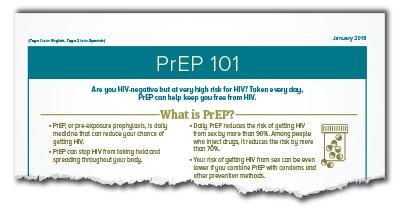Truvada
for pre-exposure prophylaxis (PrEP) to prevent HIV transmission has been
available to at-risk patients since it was approved by the FDA in 2012. Despite this, it has found limited use among
non-MSM (men who have sex with men) for HIV prevention. Truvada (emtricitabine/tenofovir
disoproxil) is a pill that can be taken once a day that, when used
consistently, can reduce the risk of acquiring HIV by more than 90%1. Truvada is generally well tolerated and is
covered by most private insurance and Medicaid.
The CDC currently recommends PrEP for women with a known HIV+ sexual
partner, a recent bacterial STI, multiple sexual partners, inconsistent or no
condom use, women living in high prevalence areas, or women who are commercial
sex workers1. The only
criteria for starting PrEP are a negative HIV test and no signs/symptoms of
acute HIV, normal renal function, and a documented hepatitis B status.
Despite
these generally broad recommendations for PrEP, few women are currently using
it. The use of PrEP has seen massive
growth in the MSM community; however, the uptake of PrEP among women has been
slow. In data released by Gilead, the
pharmaceutical company that produces Truvada, only 2,491 women were using PrEP
in 2015 (approximately 20% of all patients using PrEP), which remained
relatively stable from 2012 through 20152. Yet, the CDC estimated in 2015 that 0.6% of
women aged 18-59, or 468,000 women, had indications for using PrEP3. Additionally, of those women initiating PrEP,
significantly fewer African American women have used PrEP as compared with
White women, despite being at greater risk of acquiring HIV2. According to data from the CDC, African
American women are the group of women most at risk of acquiring HIV4. 4,189 African American women were estimated
to be newly diagnosed with HIV in 2016 as compared with 1,032 White women and
1,025 Hispanic women4. This
absence of PrEP use is likely due to patients and physicians underestimating
patients' HIV risk as well as a lack of knowledge regarding the use of PrEP in
heterosexual females. Those aware of
PrEP often think of it as something that is purely for the MSM population and
do not think of women that live in communities with high HIV prevalence. Discussing the initiation of appropriate heterosexual
females on PrEP is something that should be prioritized by primary care
physicians as a means of further preventing HIV transmission, particularly in
communities with high HIV prevalence.
- Centers for Disease Control and Prevention. Pre-exposure prophylaxis (PrEP) for HIV prevention. 2014. Available at: https://www.cdc.gov/hiv/pdf/PrEP_fact_sheet_final.pdf (accessed Dec 2017)
- Bush, S. Magnuson D, Rawlings MK, et al. Racial characteristics of FTC/TDF for pre-exposure prophylaxis (PrEP) users in the US. ASM Microbe 2016, 16-20 June 2016, Boston, MA.
- Smith DK, Van Handel M, Wolitski RJ et al. Vital signs issue details: estimated percentages and numbers of adults with indications for preexposure prophylaxis to prevent HIV Acquisition – United States, 2015. MMWR Morb Mortal Wkly Rep. 2015; 64: 1291–1295.
- Centers for Disease Control and Prevention. Basic Statistics. Available at: https://www.cdc.gov/hiv/basics/statistics.html (accessed Dec 2017).
Alyssa Mezochow
DUCOM 2018
